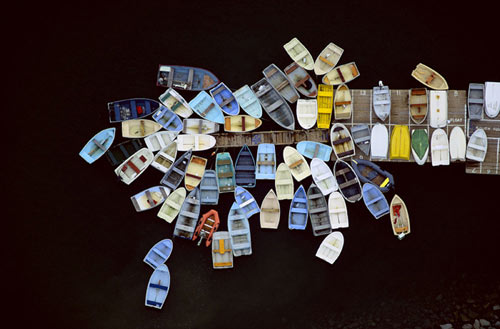OLDaily
by Stephen Downes
April 15, 2009
Relativism and Science
The question I address in this blog post is, "How can you be a relativist?" Because, as the video says, there is knowledge. You don't walk out the second floor window, and we can extend our lifespans with medicine, and all that. It's not all a big mystery, and it's not all "anything goes." Quite right. There is knowledge, and it's not all "anything goes." But it does not follow that relativism is false.
Stephen Downes,
Half an Hour,
April 15, 2009 [Link] [Tags: Video, Web Logs]
[Comment]
Blogs in Education
This is a short post I wrote as a submission for a forthcoming STRIDE handbook for The Indira Gandhi National Open University (IGNOU). See related handbooks here. It outlines what blogging is, offers an outline of its benefits in learning, and offers suggestions for their use.
Stephen Downes,
Half an Hour,
April 15, 2009 [Link] [Tags: Books, Web Logs]
[Comment]
Designing Systems For Sharing
We can agree that sharing is good. That said, then, how woul we design a system in such a way that it inherently fosters sharing. Steve Egan looks at this interesting question and offers a few suggestions. He writes, "sharing is a behavior that can be designed into systems and features. Attribution, citation and quotation all go hand-in-hand for this. All three are preferred behaviors in a sharing culture and correspond to rewards, open connections and actions. Put them together with some technology and you might get what I'll refer to as an ODSCS ( Open Distributed Social Content System )."
Steve Egan,
Learning Science Meets Game Design,
April 15, 2009 [Link] [Tags: none]
[Comment]
Measuring Networked (or Social) Learning
One of the things we know about networked learning is that we do not want to measure effectiveness merely by content remembered or retained. So on what basis do we evaluate learning? This pot offers a beginning of a response, listing a series of metrics including networking patterns, contribution patterns, and quality of contributions. Via Tony Karrer.
Eric Davidove,
Daretoshare,
April 15, 2009 [Link] [Tags: Online Learning, Networks, Quality]
[Comment]
Dinghies Clustered Around Dock

Oh I love this photo, because it's a classic example of dynamic network formation. A person wants to tie a dinghy to a dock. Eventually, the dock gets too full, and they have to tie up to other dinghies. This creates a selection process where people favour dinghies connected to the dock, and eventually, to each other. Dinghies connected to each other form the network. We can analyze the network in terms of which dinghy is connected to which dinghy, and how many dinghies it takes to climb to the dock. Note the upper limit on scalability: because dinghies take up a certain number of space, only so many dinghies can be connected to a given dinghy. Thus, this is not a scale-free network, but one in which there is an upper limit to network connectivity.
Jason Kottke,
Weblog,
April 15, 2009 [Link] [Tags: Networks]
[Comment]
Google Search Prepares for Switching to Ajax
I comment to people from time to time that they need to get ready for AJAX to replace XML. It's a prediction that's a bit out there. But getting closer to reality all the time.
Alex Chitu,
Google Operating System,
April 15, 2009 [Link] [Tags: Google, XML, Metadata]
[Comment]
This newsletter is sent only at the request of subscribers. If you would like to unsubscribe,
Click here.
Know a friend who might enjoy this newsletter? Feel free to forward OLDaily to your colleagues. If you received this issue from a friend and would like a free subscription of your own,
you can join our mailing list. Click here to subscribe.
Copyright 2008 Stephen Downes
Contact: stephen@downes.ca
This work is licensed under a
Creative Commons License.